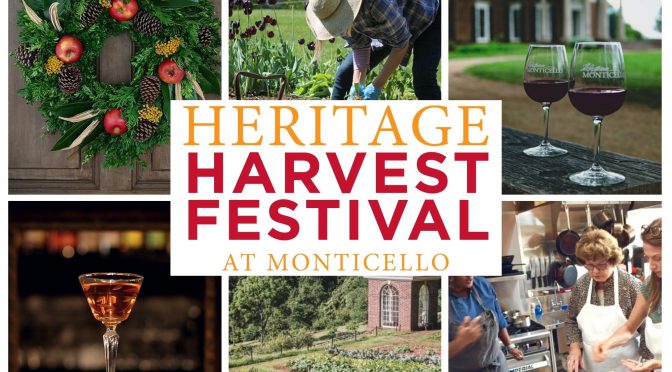This year’s annual Heritage Harvest Festival is going virtual! There are five virtual classes available this year on food, farming, and gardening.
Tickets can be purchased as a bundle or for individual classes. Each event includes a behind-the-scenes virtual peek at a special Monticello spot available only to ticket holders, unique retail offerings, and an exclusive discount coupon for use at the Shop at Monticello online or onsite.
The festival is kicking off next Tuesday night with Earth in Her Hands, an event we’re proud to say that SESE’s Ira Wallace is helping to present.
The Earth in Her Hands: Women in the World of Plants Growing a Better Tomorrow – Tuesday, October 6th, 7 pm EST
In this inaugural HHF Virtual Series Event, Monticello welcomes top-selling author and Cultivating Place podcast host, Jennifer Jewell and her guests: Monticello’s Curator of Plants, Peggy Cornett, and Southern Exposure Seed Exchange lead team member, Ira Wallace.
Join Jewell and these two nationally recognized plantswomen in a conversation that explores their respective careers— the plants, seeds, and gardens they have cultivated, efforts to raise awareness about food security, and growing truly good food.
Farmhouse Cooking Class: Finding Joy in Virginia Kitchen – Friday, October 23rd, 6 pm EST
A can’t-miss opportunity to virtually cook with innovative chefs and former Top Chef contestants Joy Crump and Stacy Cogswell
Don’t miss this rare opportunity to virtually cook with two exceptional chefs in Cogswell’s farmhouse kitchen, where the supper menu will feature seasonal Virginian cuisine and Monticello grown produce—with an added dash of New England flavor.
History in a Glass: A Cocktail Tutorial that Serves Up the Perfect Mix of Culture and Good Taste – Friday, November 6th, 7 pm EST
A cocktail hour and mixology lesson you won’t want to miss, taught by the authors of the award-winning: “Spirits Sugar Water Bitters: How the Cocktail Conquered the World”.
With its deceptively simple ingredients, the cocktail is an experiment in drinking that’s as old as the American experiment itself.
Join us for a spirited look at the story of the American cocktail – a libation innovation that made its first appearance in the historic record during Thomas Jefferson’s presidency. In this virtual, hands-on class, participants will try their skills at creating both traditional and lesser-known cocktails – including low-proof and no-proof variations that can be enjoyed any time of day.
Raise a glass to a lively class guaranteed to change the way you think about what we drink!
From the Napa Valley to Virginia Vines: Jefferson’s Legacy in Wines – Thursday, November 19th, 7 pm EST
A coast-to-coast virtual conversation and tasting event between two exceptional vintners, united by an appreciation for Jefferson’s influence on American viticulture.
Good wine was a critical ingredient in Thomas Jefferson’s ongoing experiment in American hospitality. It was also, he wrote to a friend, a “necessary of life.”
We invite you to pour a glass and join Stephen Corley of the acclaimed Napa Valley Monticello Vineyards, with Gabriele Rausse, the “father of Virginia wine,” for a guided tasting featuring varietals from two of the country’s leading wine regions. Moderated by Monticello Senior Historian and Development Officer Ann Lucas, participants will contrast and compare popular selections and taste the impact climate and soil can have on wine characteristics produced from the same grape.
Handmade for the Holidays: Décor for Your Door – Sunday, December 5th, 1 pm EST
Now in its 34th year, Monticello’s annual Wreath Workshop is an absolute fan favorite!
The now virtual workshop will again be led by veteran Monticello Guide and Floral Designer, Lou Hatch. Hatch, who is responsible for the design and installation of Monticello’s holiday decorations, is a beloved wreath workshop instructor whose in-person classes quickly fill to capacity.
We’re sad we won’t be able to see you all in person but excited to bring HHF to you wherever you may be. For more information on these events or to purchase tickets visit: https://www.heritageharvestfestival.com/




